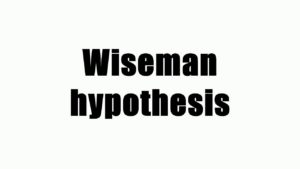PEACOCK- WISEMAN HYPOTHESIS
Q. 2016 JULY III
Consider the following:
Assertion (A): According to Peacock-Wiseman hypothesis, public expenditure increases over time in a step by step manner.
Reason (R): This hypothesis is based on the displacement effect, concentration effect and inspection effect. Select the correct answer from the codes given below:
CODES:
A) (A) is true, but (R) is false.
B) (A) is false, but (R) is true.
C) Both (A) and (R) are true, but (R) is not the correct explanation of (A).
D) Both (A) and (R) are true and (R) is the correct explanation of (A).
ANS: (D) By Allen T Peacock and Jack Wiseman who empirically proved the validity of Wagner’s law by analyzing the public expenditure from 1891 to 1955 in the UK and stated that ‘the public expenditure does not increase in a smooth & continuous manner, but in jumps & jerks or step-like fashion.’ For them, public expenditure hike goes through three stages.
a) Displacement effect: During the times of emergency or war the tax rates are increased in order to meet the increased public expenditure. A lower level of taxes and expenses are displaced by higher taxes and expenditure. When the tax rate is increased, people get automatically adjusted to it. Thus the tax rate is not reduced any further.
b) Inspection effect: Government inspects the proper functioning of taxation and expenditure in the economy. They will adjust the levels of taxes and expenses. If the revenue is not sufficient enough they will find new sources of revenue and stabilize the economy. There is no strong incentive to return to the lower level of taxation. If necessary, Government takes up new functions and activities. Once the levels got fixed it will remain until another disturbance occurs. The process will happen again.
c) Concentration: The expenditures of the central government increase more than the state and local government i.e, the concentration of expenditure are dominated by the Central government.



